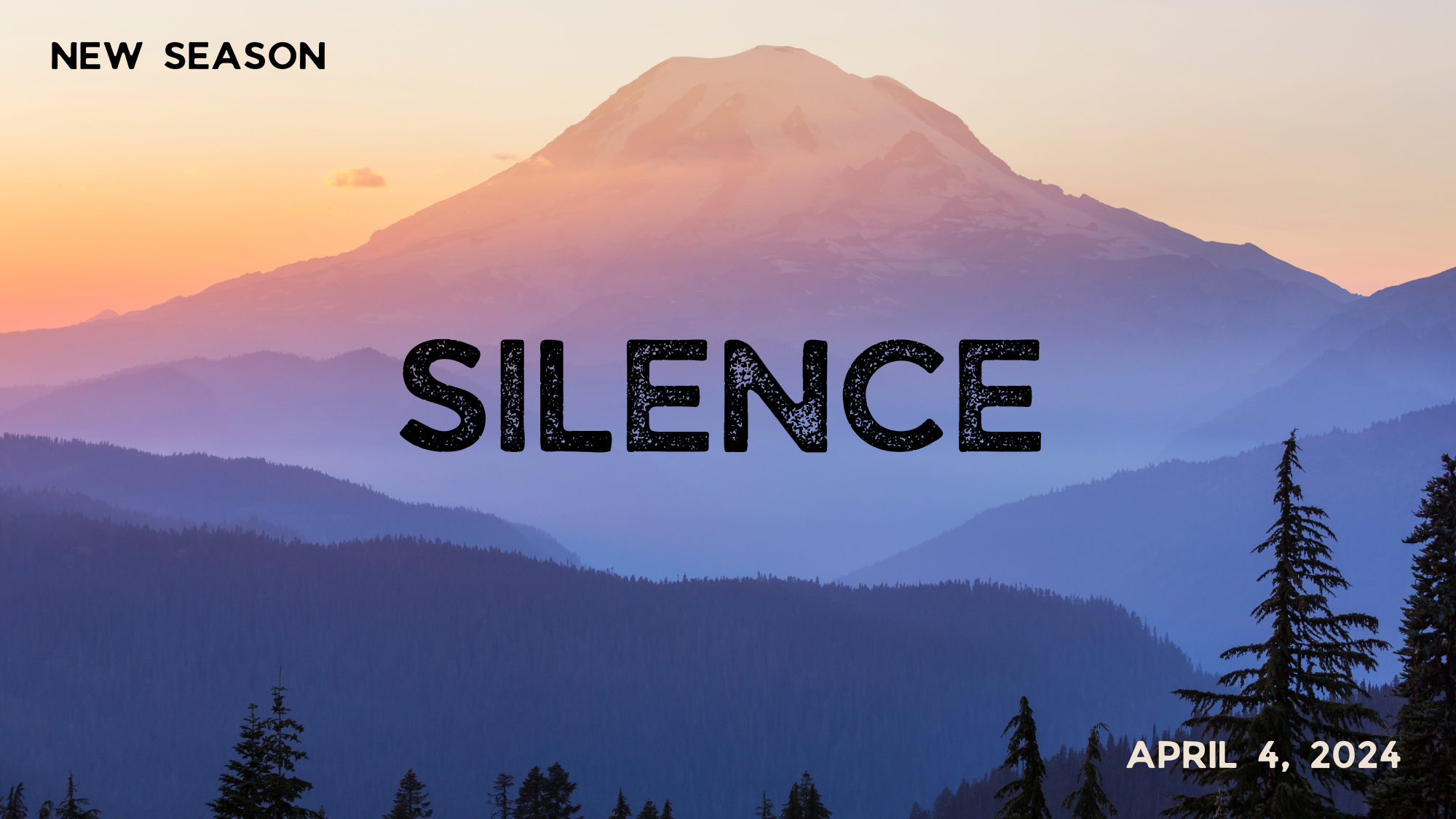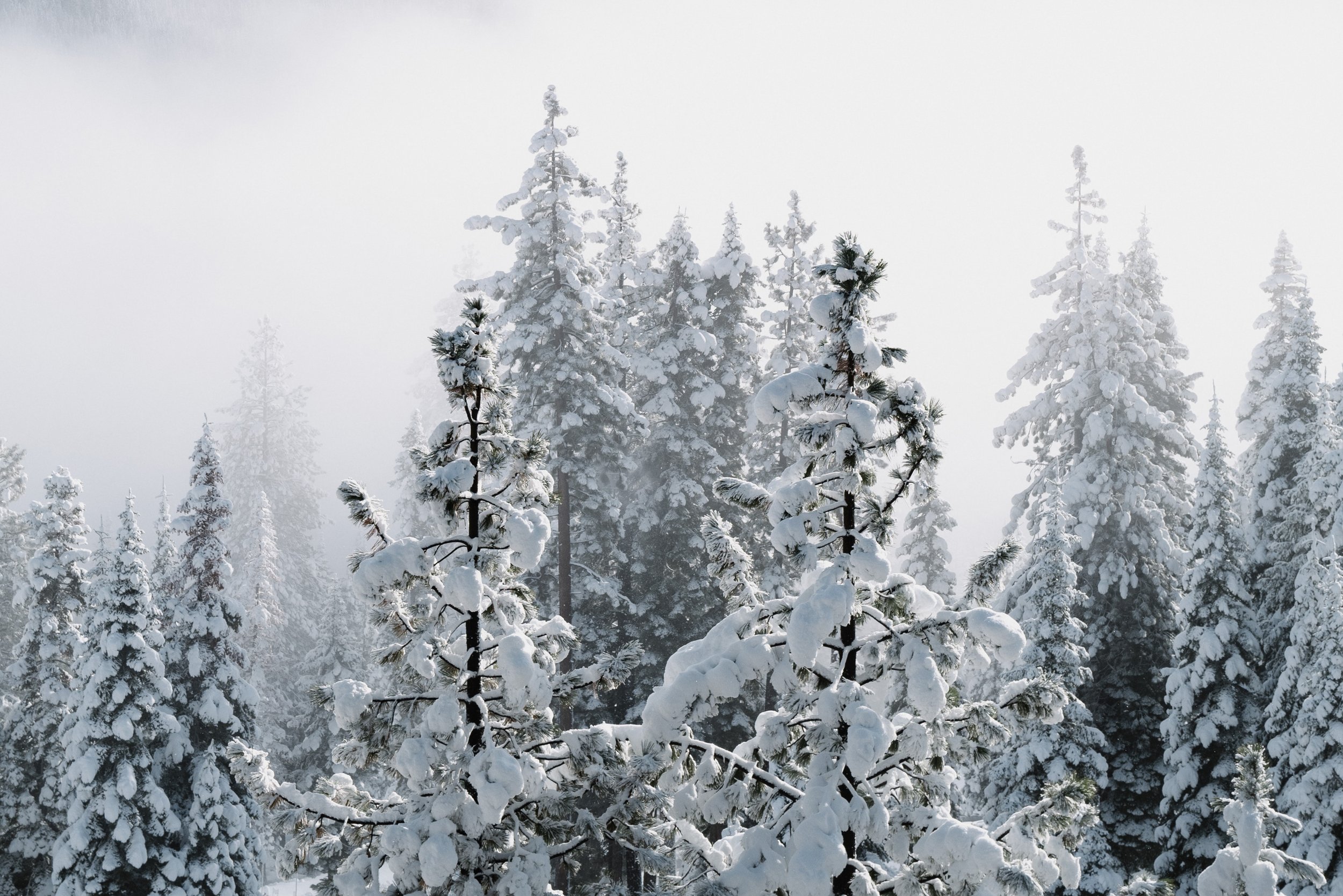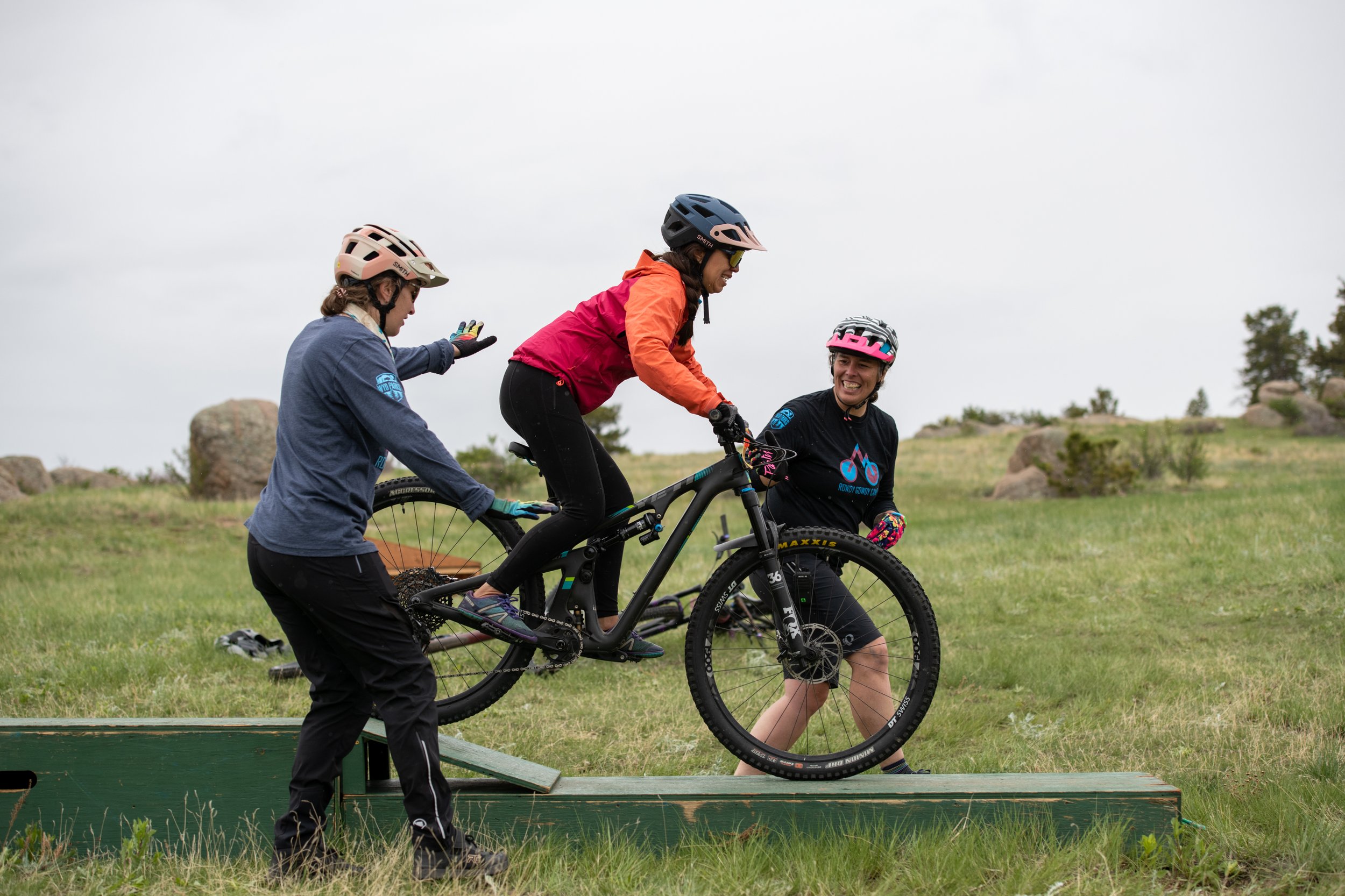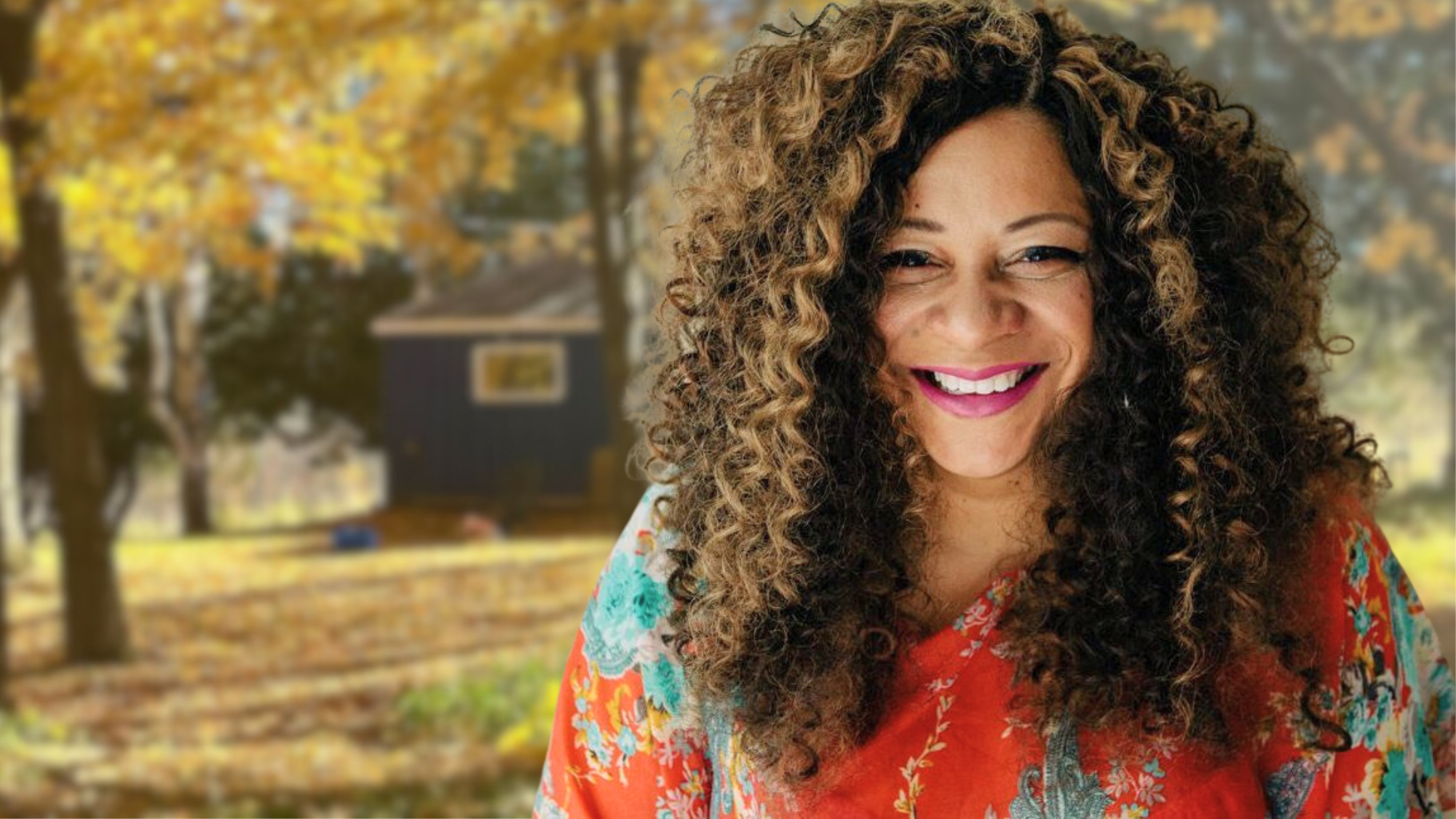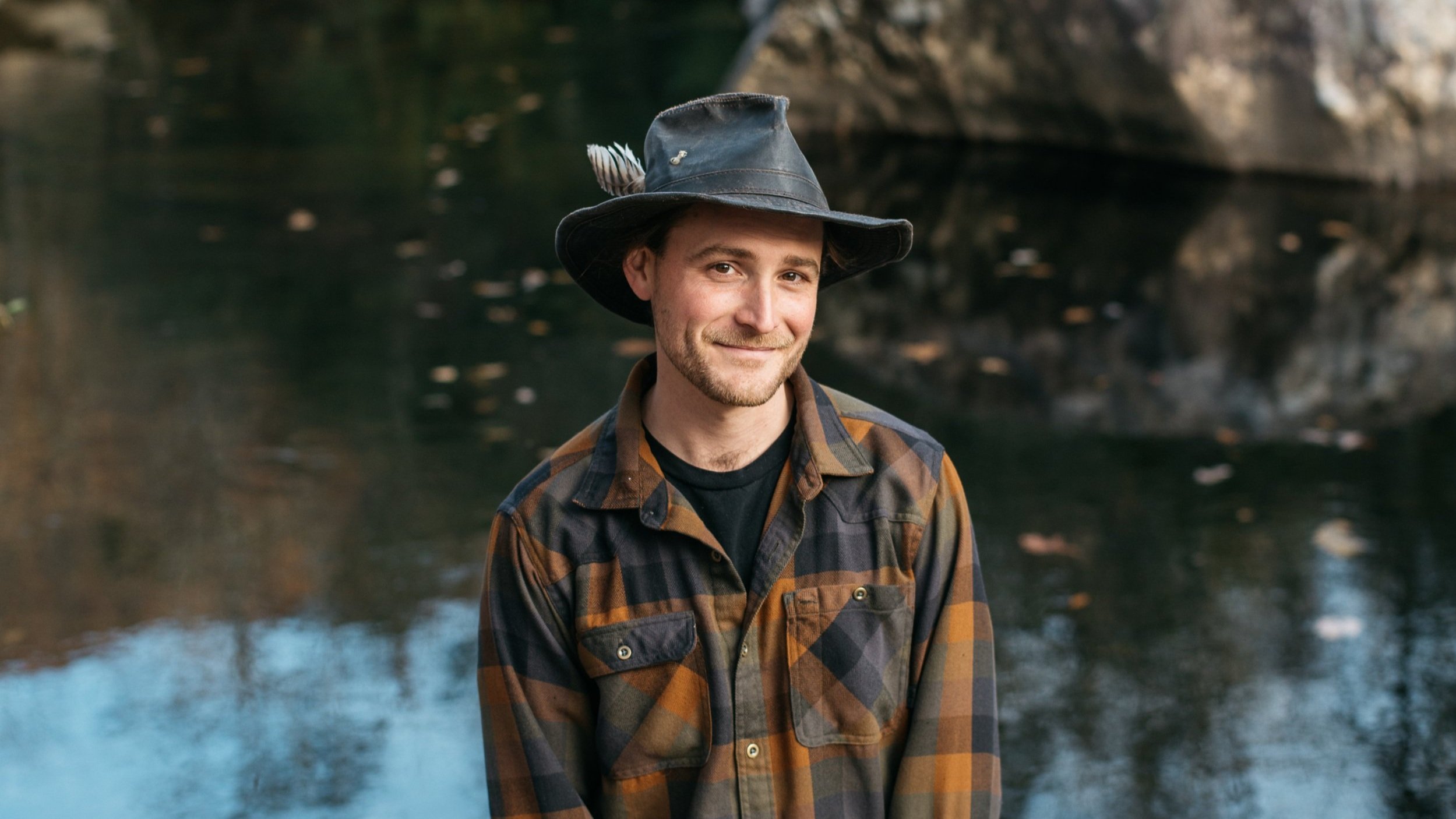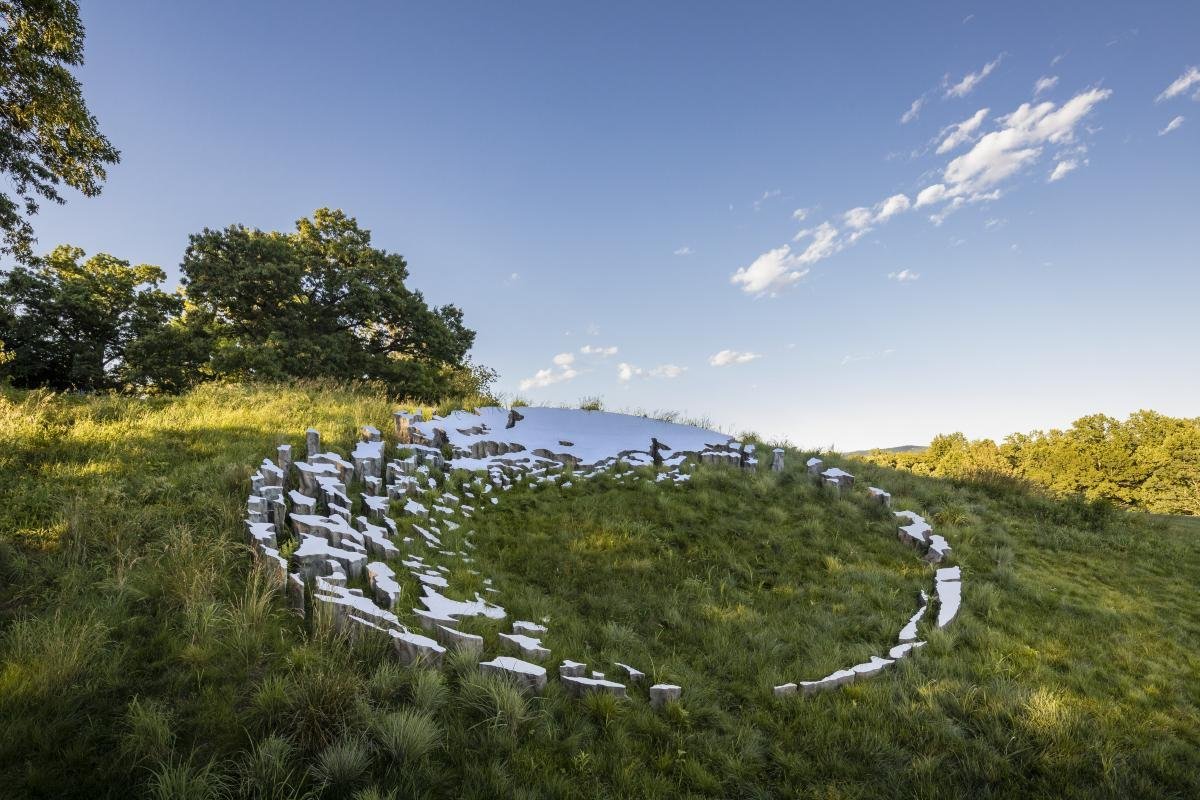My Dad’s Depression
/Can you lead a loved one to happiness?
Paul Barach and his father at Joshua Tree National Park (photo courtesy Paul Barach)
Season 6 | Episode 2
For Paul Barach, hiking is an antidote to depression. Is it that way for everyone?
This episode takes us from Washington State to Joshua Tree National Park and explores what happens when we try to impose our own life solutions on a loved one.
-
Welcome to Out There Podcast. Our stories are written for the ear, so for those able, we recommend listening while reading along. Transcripts may contain minor errors; please check the audio before quoting.
VOICEOVER: Hub and Spoke audio collective.
WILLOW BELDEN: Have you ever had a situation where you’re out on a hike, and you see a mountain off in the distance, and you want to know what it is? Lucky for you, there’s an app that can help. It’s called PeakVisor.
PeakVisor is our presenting sponsor this season. When you open up their app, it shows you a panorama of everything you’re looking at, with all the peaks labeled. They also have intricate 3-D maps to help you plan out your adventures.
If you’d like to be a superhero of outdoor navigation, check out PeakVisor in the app store. You just might love it.
Hi, I’m Willow Belden, and you’re listening to Out There, the podcast that explores big questions through intimate stories outdoors.
This season is all about silence. Each episode, we’re exploring how we find stillness amidst the noise of life.
But before we get to that, I want to tell you about an opportunity that’s coming up. This summer, Out There is partnering with a nonprofit called Common Outdoor Ground to co-host an evening of campfire stories. And we’re looking for three storytellers who’d like to participate. The event will be June 22. And it’s in person, here in southeast Wyoming. If you’re interested in being one of our storytellers, we would love to hear from you. Just click the link in the episode description. And be sure to send us your pitch by May 11th.
And now, on to our story for today.
When we find a cure for our problems, we tend to want to share it with others. Whether it’s a solution for insomnia, or a trick for being more productive at work — we have this urge to tell our loved ones about the things that are helping us. We want to fix their problems. And so we try to convince them to follow our lead.
But what if they're not interested? Can you lead a loved one to happiness? Paul Barach has the story.
And just so you know, this episode discusses depression.
PAUL BARACH: If you don’t live with clinical depression: hey, lucky.
You might think depression is feeling sad all the time, and you’re right. But it’s so much more than that. It’s this homesickness for a place you’ve never been. And it’s this black hole in the center of your chest that’s always threatening to consume you.
I’ve been battling depression for most of my life. Sometimes it’s bad, and you just ache from all that homesickness. Sometimes it’s really bad, and all the color gets sucked out of the world.
Occasionally, it’s not that bad. Occasionally.
My dad kept telling me that I just needed to find a steady career and get back on medication, because that’s what worked for him, and who do you think I got my depression from?
But A) I didn’t see medication working for him. And B) Tried that already. Didn’t work. So I’d just committed to white-knuckling through my life, but then I went on my first thru hike. And my very healthy plan changed.
I was hiking The Wonderland Trail, a 90-mile loop around Mount Rainier. And less than a mile in I rounded this bend and looked up from my map. And I froze in place. It was the first view of the mountain from the trail. And it was so big. It was like you were circling a god. And I stood there, just saying “Wow.” Like, I couldn’t understand why everyone in Seattle wasn’t here.
And the longer I stood there, the more I could hear this stillness, this silence underneath it all. And listening to that silence, the black hole reversed itself, and this joy filled my chest until I thought it would burst. The ache was gone. It felt like I’d finally come home.
The hike was nine days. And for those nine days, I was happy. I’d stop beside creeks, in forests, or on a pass with Rainier in view, and just listen to that silence.
And after I got back, the world was brighter for a couple of days. It wasn’t a magic cure. Nothing is. But for the moment, the black hole had stopped sucking so much. By the time the depression came back, I was already planning my next hike.
And that’s how it went for the next couple years. I got outside any time I could, planned my freelancing work around backpacking trips, and hiked the Pacific Crest Trail. Three thousand miles of trail later, the void had become manageable. The outdoors had made me okay. Happy as often as I was sad. And in depression world, that’s basically reaching nirvana.
And I wanted that same kind of happiness for my dad, because I was getting worried about him.
Since turning seventy, his world had shrunk, and he was shrinking with it. His one remaining friend lived hours away. He barely went out. He worked in one room, exercised in another room, then drove to his office to work more, and finally came home to watch TV.
The whole family could see him struggling, especially over the winters. But any time I tried to talk to him about it, he’d brush it off and then try to give me career advice, which I guess is a love language?
I just KNEW if I could drag him out into nature, get him captivated by that silence like I was, it’d shake him out of it, at least for a couple of days. And maybe, after he got a taste of that brighter world, he’d want to get back out there more often. He was still in good health, and this felt like the last, best chance to help him.
So I said we should go to a National Park. Just me and him. Father and son.
And he said, “Great idea.”
And then another year passed.
So I asked again, and he said, “Sounds like a plan.”
And more years passed, one of which there was a pandemic.
And once we all got the shots, I asked again. And again and again, because where do you think I got my stubbornness from?
And after five years of asking he finally said: “Okay. Let’s do Joshua Tree.” And I said, “Thank god. Great. I’ll handle the planning.”
We’d been driving a dusty stretch of I-10 for a couple hours and I was looking over the agenda. The timing had worked out perfectly. I was unemployed, because there was a pandemic, so I had time. And I’d just had the third round of a job interview that I was a shoe-in for, so there was also money on the horizon. Best of all, this inoculated me from my dad’s career advice, so both of us could focus on the trip.
After doing a bunch of research, I’d planned three hikes for us to do. They were easy enough that my dad could handle them, and they were supposed to have the best views in the park.
The first one was a short sunset hike up Ryan Mountain, where we’d get a 360-degree view of the park. The second was a flat three miles to Willow Hole, where we’d get away from the tourists with some of the best rock formations in the park. And we’d finish off the third day with a short hike around Barker Dam, which came recommended as one of the few water views in this desert.
I was hoping we’d do all three. I was expecting that we’d do two. At a minimum, I wanted to keep my dad from doing what he usually did on trips like this — which was go to the Starbucks to be on his tablet.
I knew what I wanted out of this, but he’d been mostly silent on what he was hoping to see. And I’d been wondering, out of all the National Parks, why Joshua Tree? Like, did he come here once from San Diego as a teen? Was he looking for some desert sunshine after the Seattle winter? Or was it that the landscape was so different than anything in the Pacific Northwest?
“Oh, because it’s your favorite,” he told me. “I remember you talking about it.” And I had talked about it, 10 years ago. But if I’d known he had no opinion on it, I’d have taken us to Sequoia National Park, which is my actual favorite, and also closer.
It was quiet for a while until we passed Fontana, this sprawl of houses in a dusty stretch of nothing, when my dad broke the silence.
“That’s where my half-uncle’s chicken farm was,” he said. “That’s where I first learned English.”
It’s the first I’ve heard this part of my dad’s immigration story, which had always come to us in bits and pieces.
Most of the family had been murdered in the Holocaust, with the survivors hiding out in a bunker beneath a farm in Poland for four years. For obvious reasons, they never cared to revisit that part of their life.
But he remembered arriving in America, standing on the bow of a ship, and being amazed by a woman’s red nail polish. The luxury that represented.
When they arrived in California, my dad was captivated by his half-uncle’s television. The first TV he’d ever seen in a home. Over the six months he spent watching baseball and I Love Lucy, he learned enough English to fit in at his first grade class. After school, he’d work in his parent’s grocery store, a job he had until he left for college.
And after graduating college, my dad has had one other job his entire life. He’s a success by any measure, and I love him for all the hard work he put in. It gave our family a good life. But I knew he wasn’t fully enjoying his own. That’s why I couldn’t wait for my dad’s reaction to Joshua Tree.
I pictured us sitting at a beautiful overlook. I’d put my arm around his shoulder and he’d say, “Wow” and finally get it, and just be happy in all that silence. And maybe after the trip, he’d get inspired to get out more and brighten up his world. That was my plan, anyway.
WILLOW: Hey, it’s Willow. We’ll hear the rest of the story in a moment. But first, I want to tell you about another podcast I think you’ll like. It’s called Subtitle and it tells stories about languages and what they mean to us.
Do polyglots have special skills? Why do we favor some accents over others? Do we think differently in different languages?
You can hear about the fun debates an American linguist has with her British-born husband and daughter. Or how comedian Sugar Sammy decided to do four different standup shows, each in different languages. Or the incredible staying power of the Irish language.
You’ll hear all this and much more on Subtitle: Stories about languages and the people who speak them. Listen to Subtitle wherever you get your podcasts, or at subtitlepod.com.
And now, back to the story.
PAUL: We both got excited once we pulled off the highway into Joshua Tree. It’s hard not to. Joshua Tree is like touching down on some alien planet.
The trees look like Dr. Seuss drew them. These thin trunks with branches that contort towards the sky, ending in these long dagger-shaped leaves. And all around them are these towering boulder formations.
The road wound past some old mining shafts, and I turned to my dad and said, “I’ll never understand it. How can you come out here and look at all this beauty, and only think of what you can extract from it?”
“That’s because you’ve never been dirt poor, Paul,” my dad replied. And he’s right, but so am I.
We drove past rows of vans on the side of the road, where climbers packed their gear up after another day on the crags. And finally, we pulled into the Ryan Mountain Trailhead.
We started up the gentle sandy trail in good spirits. My dad said it felt great to be out of the Seattle gloom. And meanwhile, I was over the moon.
After years of saying it would happen, and low-key doubting it would happen, we’re finally here. Father and son. About to experience this incredible place together. Maybe next year, we could do Sequoia.
Midway through the hike, my dad started slowing down. He looked up at the top, and I could see him calculating exactly how many steps he had left in him, which was zero.
And I tell him, “It’s only a quarter mile more, you know, just a couple hundred more feet.”
And he waves me off and says, “Go on, enjoy it.” He’ll wait for me.
And it’s like, come on. Like, we’re almost there. Like, just another quarter mile. But if I push him now, he’s gonna be too tired tomorrow. And I can’t just carry him up there, probably, so I leave him there and jog the last bit up
And I am so bummed once I reach the top and see that sunset. Because it is incredible. The giant desert sun sank behind the distant mountains. The rock formations below were casting these sundial shadows across the desert floor. And the specks of Joshua trees with their arms up, praising the sunset.
I’m sure if my dad had seen it, it would have changed him. But that’s fine. Because those rock formations are way more impressive when you’re looking up at them rather than down on them. And we’re gonna see plenty of those tomorrow at Willow Hole. So I soaked up as much as I could, took some photos, then jogged back down to show him what he missed up there.
He nodded at the photos, then asked to hear more about the job I’d interviewed for. And just as I was in the middle of bragging about how I’ve totally got this job locked down, an email from the hiring manager dinged on my phone. I opened it up, and I totally did not get that job after all.
And I said, “Ah, dammit.”
And this sympathy, this care and concern, fills my dad’s face, and I think, ‘Ah, dammit.’ Because now, instead of focusing on all this beauty surrounding us, all weekend, I’d be getting more job advice. Which I got on the whole drive back to the hotel, where he suggested I should figure out how to be an influencer, and I’m still not sure if he knows what that word means.
The next day was the hike to Willow Hole. Unlike yesterday, I was sure this one would be the ticket. We got plenty of rest. It’s a flat three miles through a sandy wash. A little exposed, but that’s why I made sure we brought plenty of sun protection, and I’ve filled up my CamelBak and I’m bringing two extra liters so we’ll have plenty of water.
Dad waited until we were halfway to the trailhead to tell me he was gonna sit this one out. Too tired from yesterday to hike. And I took a deep breath, and reminded him that it’s flat the whole way, we have plenty of water and snacks that he watched me pack for him, and we only have one more day here.
But he said no, and I can’t exactly force a seventy-five year old to hike through the desert. So we agreed that he’d pick me back up at 3 p.m. from the trailhead. And I knew he was heading to the Starbucks to be on his iPad.
I hiked out beneath Joshua trees towards the snow-capped mountains. And once I got a half-mile from the parking lot it was basically empty of people all the way to Willow Hole.
And I really wish my dad could have been there. Because it was perfect. Shaded and cool in this amphitheater of stacked boulders and melted stone. Lizards darted to the edge of this small pond where Pinyon Jays bathed and sang.
We could have rested there for hours hearing the wind slice through the Joshua trees, exploring the boulders, talking, or just sitting in awe.
Instead, I soaked up as much as I could, then hurried back to meet my dad for the 3 p.m. pickup.
After two failed hikes, Barker Dam had a lot riding on it, and it did not deliver. It was more of a pond, with some low boulder mounds around it. Dad thought it was fine, and it was. But it was nothing like what he’d already missed. It wasn’t the kind of view that would pull him out of his depression or inspire him to start hiking. There was no “wow” to it. And it was time to head home to Seattle.
As we drove out of the park, dad turned to me and said, “Have you considered going back to school? There are these programming bootcamps I heard about…”
And I nodded along, but then out the window I saw a couple of people sitting on top of this rock formation, enjoying themselves in the late afternoon sunshine. And I pulled the car over and convinced my dad to climb up with me. He was uncertain, but it was an easy scramble. I showed him where to put his hands, and placed his New Balance sneakers from Costco in the footholds. And I stayed where I could catch him in case he slipped, then once he had it, scrambled up after him.
And the view from the top was perfect. Off in the distance, you could see people roping up to climb. On the road below, cars the size of Tic Tacs drove by the boulder formations. And birds were swooping around an impossibly blue desert sky.
And when my dad finally caught his breath, he turned to me, and said, “You know, maybe they rejected you because you’ve bounced through so many jobs before.”
And I said, “Let’s talk about that later,” and went to take some photos. Because it was our last day here, and at least I was going to enjoy this place.
It was quiet for a couple of minutes, and when I looked back, my dad was sitting on a small rock, just gazing out at the expanse. And without turning, he said, “You know, it really is breathtaking out here.”
And that’s all I wanted him to say. The whole weekend. That he could see what I saw out here. That he’d be okay.
And I said, “I love you, Dad.” And he didn’t hear me. He was too captivated by the view. And I wasn’t going to take him away from it. So instead I came over and sat next to him and put my arm over his shoulders. And we listened to that breathtaking silence together.
In the end, it didn’t work. My dad’s still a homebody. I keep hiking. We’re both still depressed.
The truth is, neither of us knows how to help the other one. We only know how to help ourselves, and barely even that.
But in the end, it doesn’t matter. What matters is that we were out there together. Father and son. Two sad men who wanted nothing more in the entire world, than for the other one to be happy.
WILLOW: That was Paul Barach. He’s a writer living in Tacoma, Washington. His book Fighting Monks and Burning Mountains: Misadventures on a Buddhist Pilgrimage is available on Amazon. You can follow him on Instagram @BarachOutdoors.
If you enjoyed this story, please consider supporting Out There. We are a tiny, independent production, and listener contributions make up the majority of our funding. Your gifts pay for the stories you hear on this show.
To make a contribution today, click the link in the episode description, or go to patreon.com/outtherepodcast. Patreon is a crowd-funding platform for creative endeavors, and it’ll let you make a monthly contribution to Out There — in any amount that works for you.
Again, that’s patreon.com/outtherepodcast.
Coming up next time on Out There…
JD REINBOTT: You’re just sitting underwater, and the only thing you can hear is the sound of your breath and the crackling of life underwater.
WILLOW: For Mental Health Awareness Month, we’re bringing you a special episode about how silence in nature impacts our emotional well-being.
Tune in on May 2.
DENIS BULICHENKO: My name is Denis Bulichenko. I go hiking almost every weekend.
WILLOW: Denis is the founder of PeakVisor, our presenting sponsor.
Recently, he went out with a mountain guide, and they ventured into the unknown. The plan was to go up and over an entire mountain range.
DENIS:We asked several other mountain guides in that area. They told us, “No, no one does that.”
WILLOW: The guides didn’t know of any reliable trail that would connect.
DENIS: But judging by the app data, there was one. And we did that. And yeah, it was just amazing. Even mountain guide was excited about that trip.
WILLOW: If you’d like to wow the mountain guides, check out PeakVisor.
They have maps of mountains all over the world, information about weather and snow conditions, and a peak-bagging feature to help you keep track of your accomplishments.
Check out PeakVisor in the app store. You just might love it.
Today’s story was written and narrated by Paul Barach. Story editing and sound design by me, Willow Belden. And special thanks to Maria Ordovas-Montanes and Wade Roush for production assistance.
Out There’s audience growth director is Sheeba Joseph. Our interns are Katie Reuther and Maria Ordovas-Montanes. Our ambassadors are Tiffany Duong, Ashley White, and Stacia Bennet. And our theme music was written by Jared Arnold.
We’ll see you in two weeks. And in the meantime, have a beautiful day, be bold, go outside, and find your dreams.
Credits
Story by Paul Barach
Story editing and sound design by Willow Belden
Special thanks to Maria Ordovas-Montanes and Wade Roush for production assistance
Links
Support Out There on Patreon
Tell a story at our Campfire Stories night
Subscribe to our email newsletter




